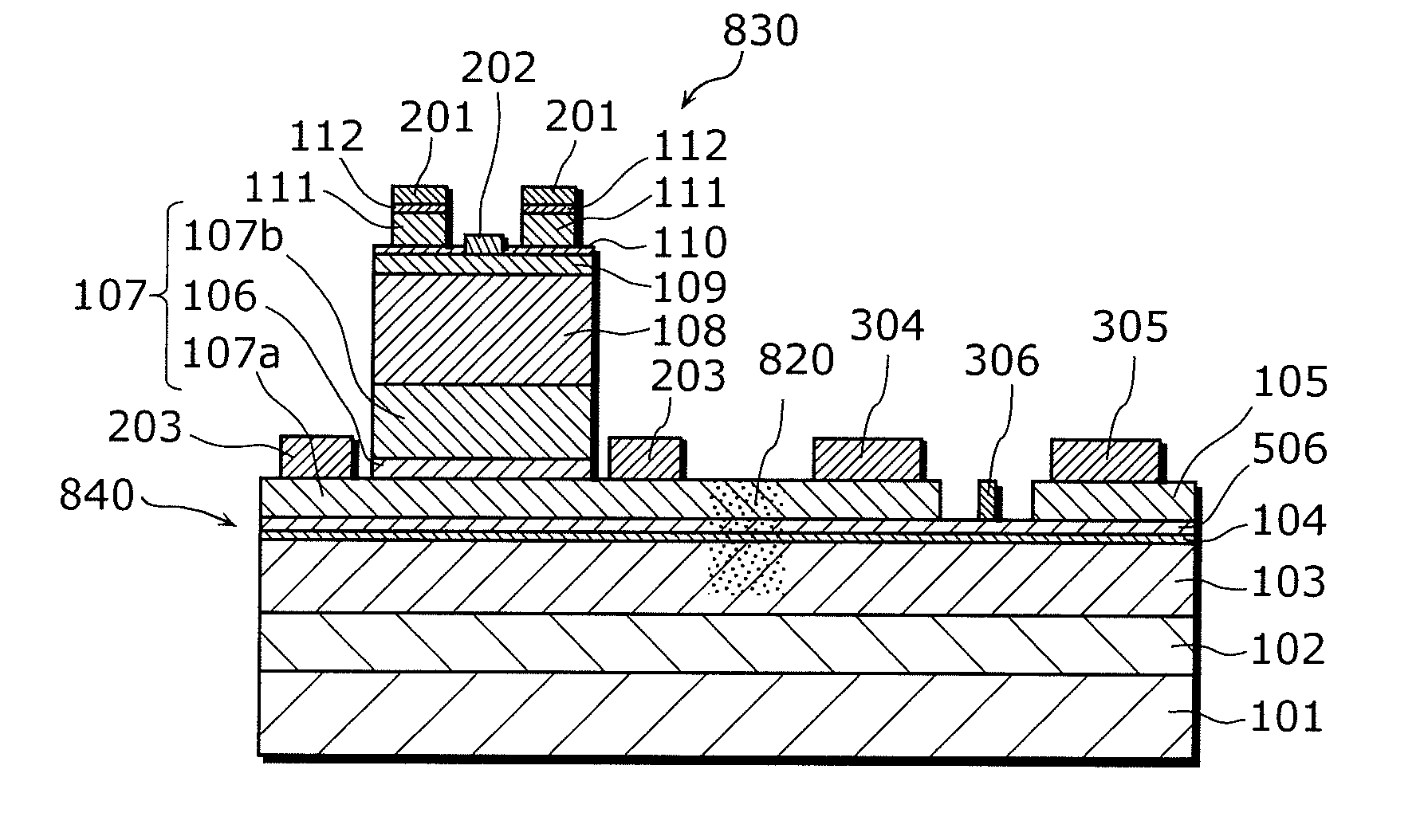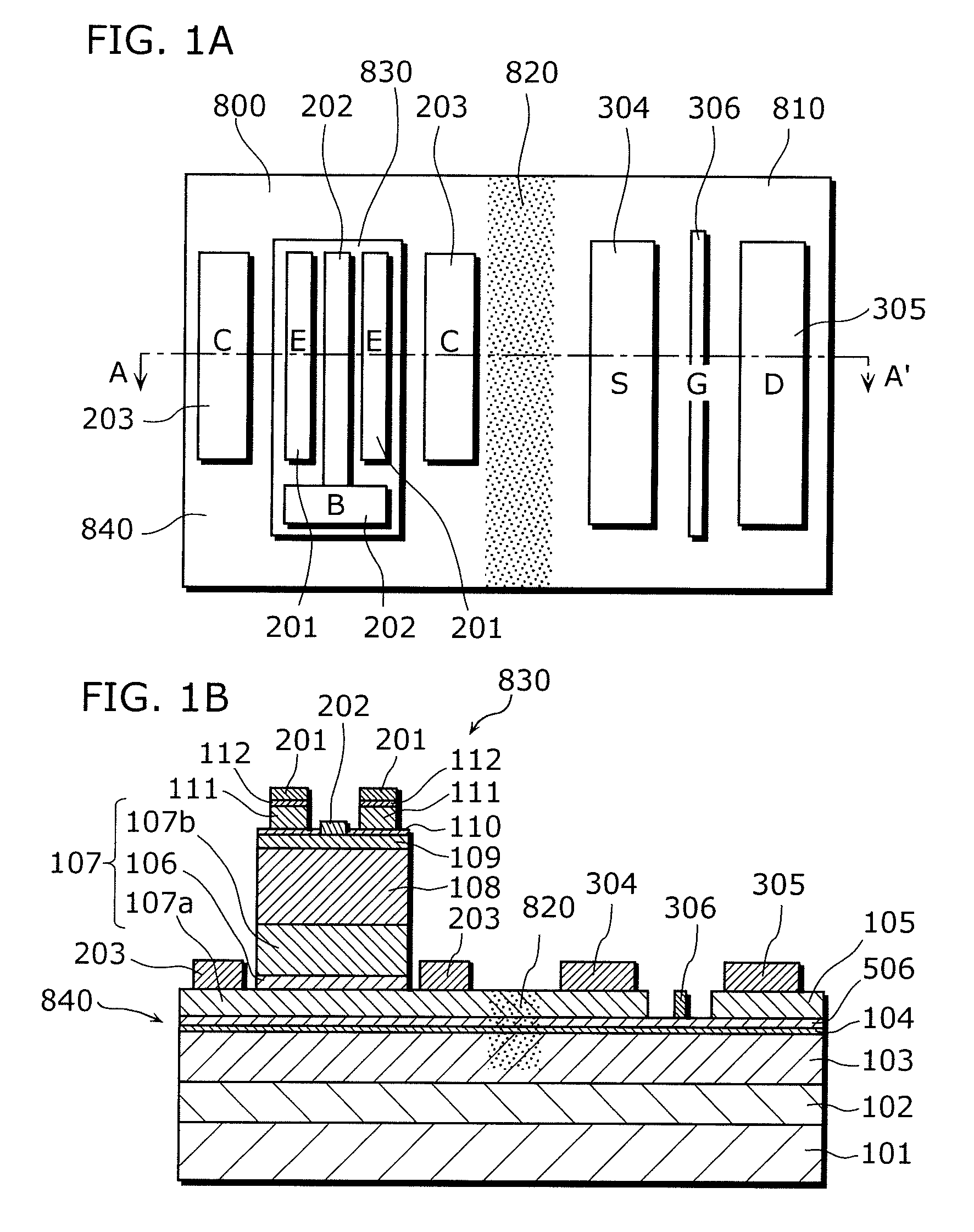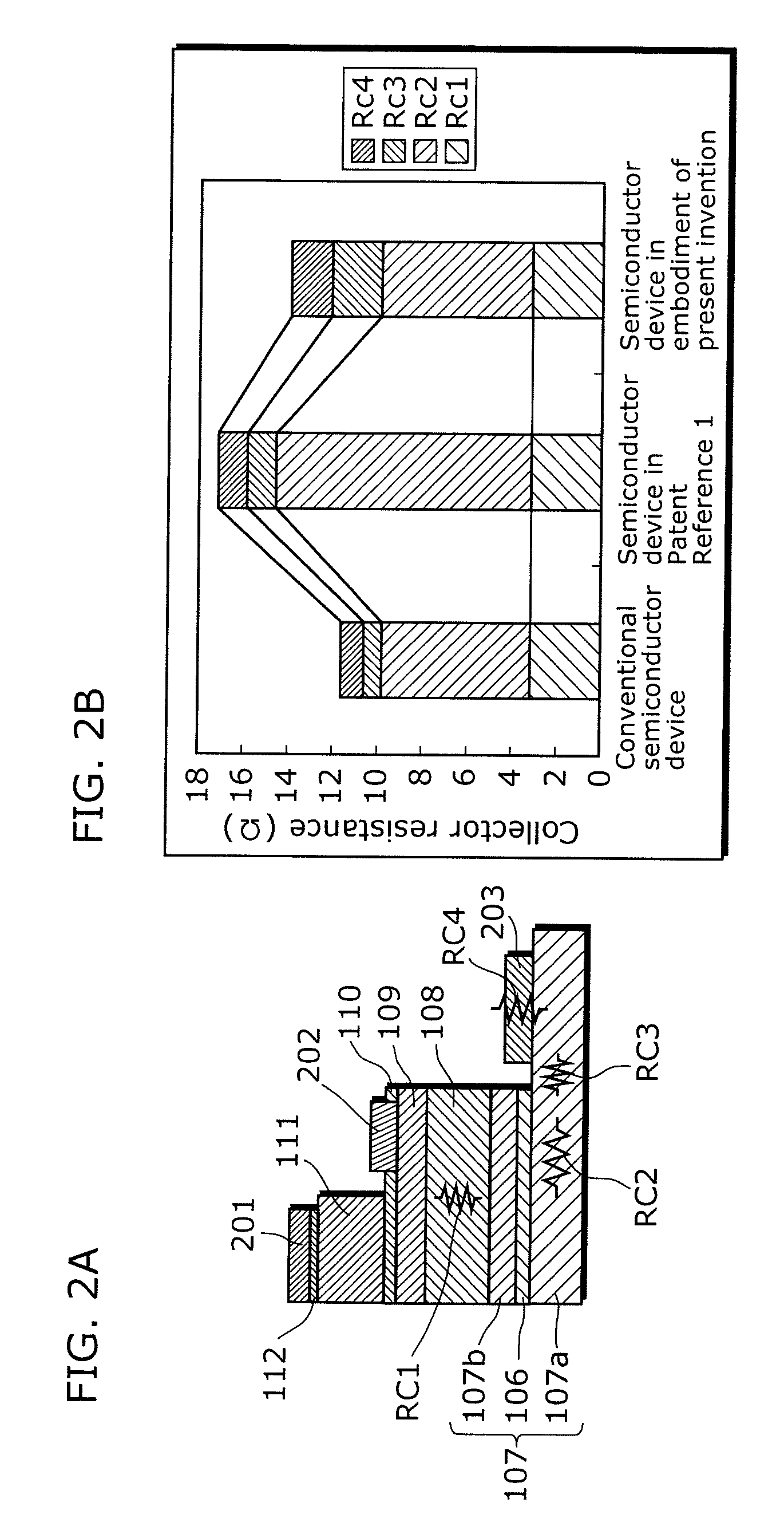Semiconductor device
a semiconductor device and on-resistance technology, applied in the field of semiconductor devices, can solve the problems of increasing the collector resistance, increasing the on-resistance of the hfet, and the semiconductor device described in the patent reference 1 cannot satisfy both of the characteristic advantages, so as to reduce the number of masks, reduce the on-resistance of the hfet, and reduce the mask length
- Summary
- Abstract
- Description
- Claims
- Application Information
AI Technical Summary
Benefits of technology
Problems solved by technology
Method used
Image
Examples
Embodiment Construction
[0027]Hereinafter, an HBT and HFET integrated circuit (Bi-HFET) and a manufacturing method thereof in an embodiment of the present invention are described with reference to the drawings.
[0028]FIG. 1A is a top view illustrating a Bi-HFET in the embodiment of the present invention. Meanwhile, FIG. 1B is a cross-sectional view taken from line A-A′ of FIG. 1A showing a Bi-HFET structure.
[0029]This Bi-HFET, a semiconductor device having an HBT and an HFET formed on the same semiconductor substrate, includes regions with the HBT and the HFET formed (respectively referred to as an HBT region 800 and an HFET region 810). The HBT region 800 and the HFET region 810 are electrically separated by an injected element separating region 820.
[0030]In the HFET region 810, a GaAs / AlGaAs superlattice layer 102, an AlGaAs barrier layer 103, an InGaAs channel layer 104, an electron donor layer 506, and a GaAs cap layer 105 are sequentially stacked on a semi-insulating GaAs substrate layer 101. The sourc...
PUM
 Login to View More
Login to View More Abstract
Description
Claims
Application Information
 Login to View More
Login to View More - R&D
- Intellectual Property
- Life Sciences
- Materials
- Tech Scout
- Unparalleled Data Quality
- Higher Quality Content
- 60% Fewer Hallucinations
Browse by: Latest US Patents, China's latest patents, Technical Efficacy Thesaurus, Application Domain, Technology Topic, Popular Technical Reports.
© 2025 PatSnap. All rights reserved.Legal|Privacy policy|Modern Slavery Act Transparency Statement|Sitemap|About US| Contact US: help@patsnap.com



